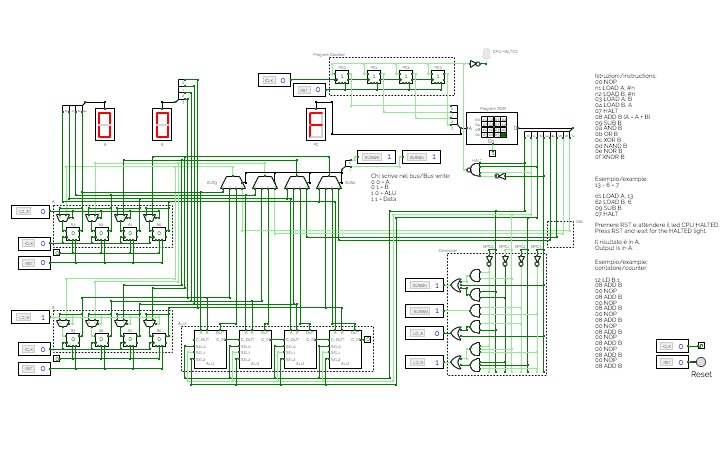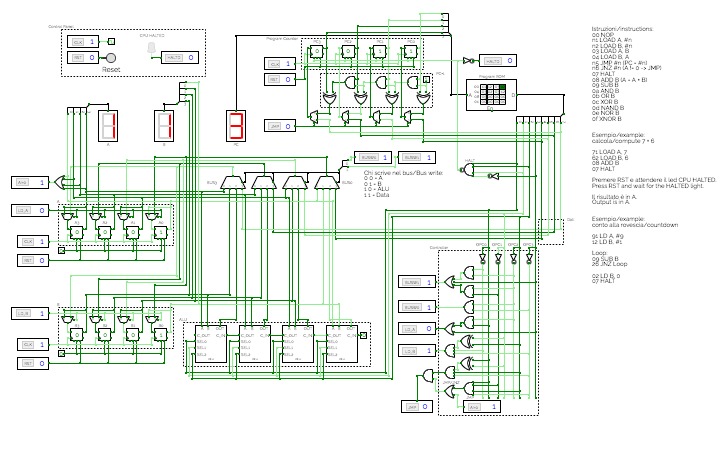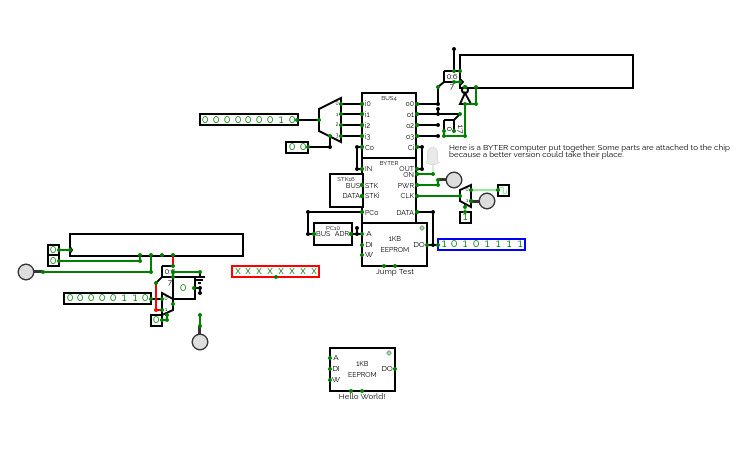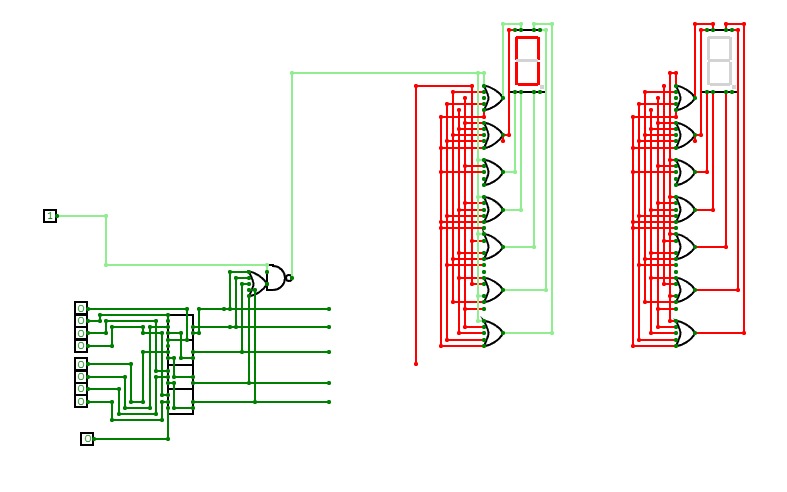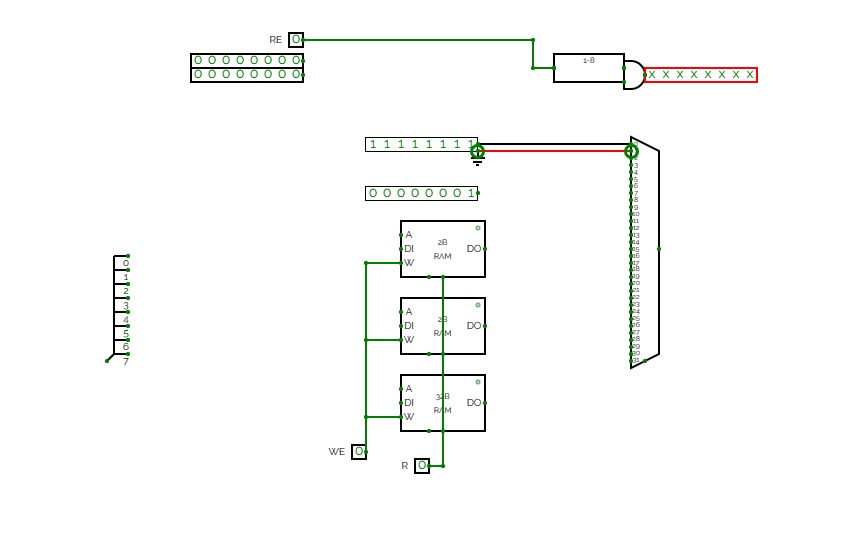SAP-1
SAP-1- LDA - 0 - Load RAM data into accumulator
- ADD - 1 - Add RAM data to accumulator
- SUB - 2 - Subtract RAM data from accumulator
- OUT - e - Load accumulator data into output register
- HLT - f - Stop processing
Working CPU with eight 8-bit registers and eleven commands. Instructions in the project, command list below.
Commands:
LDA r - loads value from register r into accumulator
STA r - stores accumulator value in register r
CLR r - clears register r
INC r - increments the value of register r and replaces into r
DEC r - decrements the value of register r and replaces into r
COM r - stores the complement of the value in register r in the accumulator
ADD r - adds value in register r to the accumulator
SUB r - subtracts accumulator value from value in register r, replaces into accumulator
AND r - stores value of (accumulator AND r) in accumulator
IOR r - stores value of (accumulator OR r) in accumulator [inclusive or]
XOR r - stores value of (accumulator XOR r) in accumulator [exclusive or]
*Eight 8-bit registers: r must be a value between 0 and 7 and refers to the address of the register, not its contents*
Microprocessore a 4 bit
Microprocessore a 4 bitMicroprocessore a 4 bit v2
Microprocessore a 4 bit v2BYTER: Nonexistent ISA following chip (old version)
BYTER: Nonexistent ISA following chip (old version)I decided to do this separately from the other one because it works nicely. Also it follows a set philosophy instead of "eh, I'll figure it out". This is NOT meant to be good, it's meant to work. This version is currently abandoned, but I'm leaving it up so others can look at it still
ModuSt Chip
ModuSt ChipAnother nonexistent ISA based chip, but this time I have a bit of experience with it. I'm also doing things a little bit differently this time around, too.
The name itself means Modular Stack, because that's its two big concepts. First is that it's all focused on working with a stack, and second is that it's very modular.
decode
decodeyup
here's 10 hours of my life ill never get back
note: click "clr" before use
OP codes and Input numbers:
OP1 0 OP2 0 null
OP1 0 OP2 1 add
OP1 1 OP2 0 write
OP1 1 OP2 1 read
number - binary equivalents
A1 A2 = B1 B2 =
0 0 = 0 | 0 0 = 0
1 0 = 1 | 1 0 = 1
0 1 = 2 | 0 1 = 2
1 1 = 3 | 1 1 = 3



